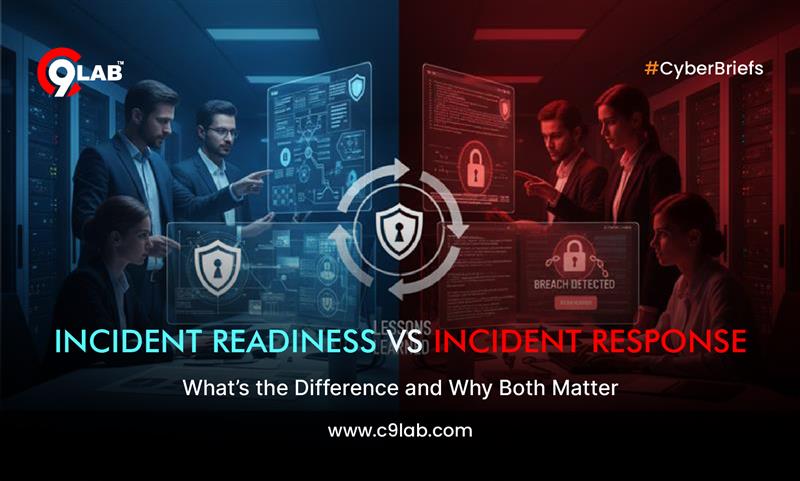In the world of cybersecurity and IT operations, the terms Incident Readiness and Incident Response are often used interchangeably, but they represent distinct, though related, phases of a mature security posture. Understanding the difference between the two is crucial for building a resilient organization that can effectively handle security incidents, minimizing damage and recovery time.
What is Incident Readiness?
Incident Readiness is the proactive, preparatory phase. It encompasses all the activities an organization undertakes before an incident occurs to ensure it is fully prepared to handle one effectively. Think of it as the training, planning, and equipping phase.
Key Components of Incident Readiness:
| Component | Description |
| Policy & Plan Development | Creating and formalizing the Incident Response Plan (IRP), which dictates roles, responsibilities, and procedures. |
| Tooling & Technology | Implementing necessary security tools like Security Information and Event Management (SIEM), endpoint detection and response (EDR), backup systems, and forensic tools. |
| Team Structure & Training | Defining the Incident Response Team (IRT) roles and ensuring all members are trained on the plan, tools, and necessary skills (e.g., forensics, communication). |
| Simulation & Tabletop Exercises | Running regular simulations (like “fire drills”) to test the IRP’s effectiveness, identify gaps, and keep the team sharp. |
| Asset Inventory | Maintaining an up-to-date and accurate inventory of all critical assets, systems, and data. |
In short: Incident Readiness is about having the map, the vehicle, the trained driver, and running dry runs before the road trip starts.
What is Incident Response?
Incident Response is the reactive phase. It is the execution of the pre-defined Incident Response Plan after a security breach or incident has been detected. It’s the moment your team shifts from planning to acting.
The primary goal of Incident Response is to stop the attack, minimize the damage, recover operations, and prevent recurrence.
The Six Phases of Incident Response (following the NIST standard):
- Preparation (Note: This overlaps heavily with Readiness as the phase before the incident, but is a crucial first step in the formal IR process).
- Detection & Analysis: Identifying that an incident has occurred and assessing its scope, nature, and severity.
- Containment: Taking immediate action to stop the incident from spreading (e.g., isolating affected systems, blocking malicious IP addresses).
- Eradication: Removing the root cause of the incident (e.g., patching vulnerabilities, deleting malware, securing compromised accounts).
- Recovery: Restoring affected systems to a secure, operational state (e.g., restoring from clean backups, monitoring for signs of re-infection).
- Post-Incident Activity (Lessons Learned): Documenting the entire event, analyzing what worked and what didn’t, and updating the Incident Readiness plan to prevent similar future incidents.
In short: Incident Response is the actual driving of the vehicle according to the map when a flat tire or accident occurs.
Why Both Are Essential
Neither readiness nor response can succeed without the other. They form a continuous cycle of improvement often referred to as the Incident Lifecycle.
- Readiness without Response: You have a detailed, beautiful plan that hasn’t been tested or practiced. When an actual incident hits, the team may panic, misinterpret the plan, or find the tools don’t work as expected under pressure. It’s a paper-only security strategy.
- Response without Readiness: You have a capable technical team, but they lack a unified plan, clear roles, or the right tools. They might spend precious hours debating who does what, searching for asset documentation, or “winging it,” leading to a slower, more chaotic, and ultimately more expensive recovery.
The post-incident ‘Lessons Learned’ phase of Incident Response directly feeds back into Incident Readiness, driving updates to the plan, new training requirements, and technology investments. This feedback loop ensures the organization gets stronger with every incident.
Key Takeaway: True organizational resilience comes from integrating proactive Incident Readiness planning and training with the disciplined execution of Incident Response procedures. It’s not just about reacting well; it’s about being so prepared that your reaction is seamless, fast, and highly effective.
Actionable Steps for Your Organization
- Formalize the IRP: Don’t just have a document; have an approved, communicated, and easily accessible plan.
- Test Regularly: Schedule at least two different types of exercises (e.g., a technical simulation and a leadership tabletop drill) every year.
- Invest in Forensics: Ensure you have the logging, monitoring, and capabilities to analyze an attack, not just block it.
- Document Everything: During a live incident, documentation is tedious but critical for the “Lessons Learned” phase. Make it a priority.

